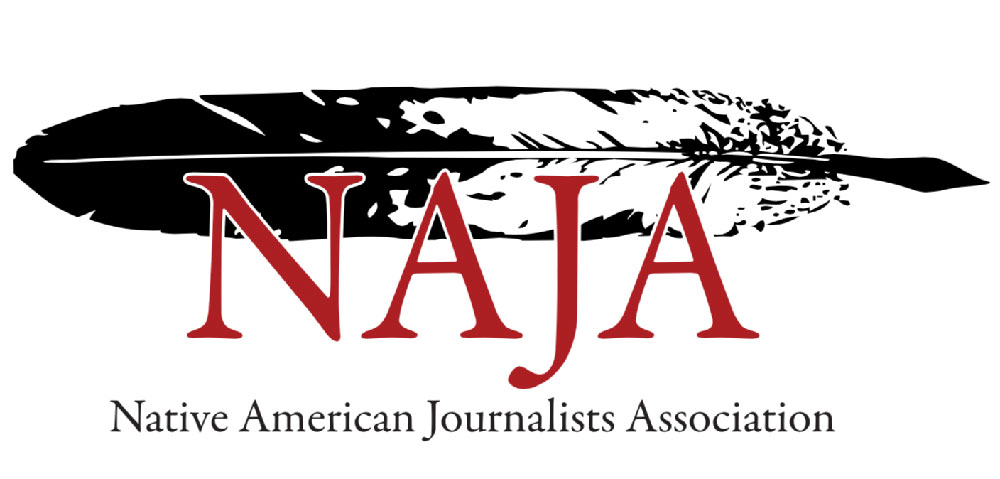
September 28, 2020; Indian Country Today
On Monday, the Native American Journalists Association (NAJA) announced its 2020 National Native Media Award winners.
Among those winning a large number of awards was Indian Country Today, which, notes Meghan Fate Sullivan (Koyukon Athabascan), who writes for that publication, “took home six awards, including first place for best environmental coverage and best elder coverage; second place for best feature photo; and honorable mentions for excellence in beat reporting, best coverage of Native America, and best multimedia story.”
This outcome is largely unremarkable. Indian Country Today has long been a leading voice in Native American journalism, and one would expect the publication to do well, just like one is not too surprised when the New York Times wins a Pulitzer.
There is just one thing that makes this situation different—namely, as some NPQ readers might recall, Indian Country Today, which has been a leading voice in Native American journalism since its founding in 1981, nearly did not make it out of 2017.
Sign up for our free newsletters
Subscribe to NPQ's newsletters to have our top stories delivered directly to your inbox.
By signing up, you agree to our privacy policy and terms of use, and to receive messages from NPQ and our partners.
When NPQ reported on the NAJA awards that year, Indian Country Today’s name was all over the awards. But that same month, the publisher announced that publication had ceased. There were noises about repurposing the publication “in a way that’s viable, both journalistically and economically,” but no obvious path was available.
And yet, with the support of the National Congress of American Indians, the publication was reborn as a nonprofit media outlet in early 2018. And it has been more than reborn; it’s been revitalized. Since the relaunch, readership has grown to 500,000 unique users monthly, up from 160,000 in 2018, and Indian Country Today has opened bureaus in Washington, DC, and two areas with significant Native populations—Arizona and Alaska. And, in fall 2019, it developed a partnership with the Associated Press (AP). Stunningly, it was just one year ago—on October 1, 2019—that AP for the first time distributed a story that had originated from a Native American publication.
It’s taken a long time, but philanthropy has also upped its support for American Indians in journalism—and not just through Indian Country Today. In March, NPQ noted that Report for America had committed to funding 19 Native American journalists covering Indigenous and other related beats in various participating newsrooms across the country, up from 10 the previous year.
It is always informative to look at award-winning articles, which give you a sense of the articles in Indian Country that mainstream media misses.
- Among the award-winning stories this year was one on the importance of wild rice (manoomin) in the Ojibwe diet and the impact of climate change on the wild rice ecosystem.
- A second award-winning story by Taylor Notah (Diné/Navajo) looked at the work of legal students in helping the Indian Law Clinic at Arizona State University carry out its Native Vote Project.
- A third award-winning article by Mary Anne Pember (Ojibwe) covered the #MeToo movement in Indian Country. Not shying away from hard truths, Pember noted in the article, written after nine months of research, that 30 to 35 percent of the perpetrators of sexual assaults on Native women are Native men. “In the process of reporting,” she added, “we learned about the lack of accountability, and procedures for reporting harassment in tribal, nonprofit and federal government agencies. We also found high rates of unreported incidents, negative consequences for victims and a culture of protecting perpetrators.”
At NPQ, we regularly call attention to the importance of framing and narratives. It’s hard for a community to build its own narratives without access to communication media to do so. The American Indian press may be growing, but it is still small. Mark Trahant, editor of Indian Country Today, noted last year that with an estimated two dozen Native reporters, the paper’s Native reporting staff might be larger than “the total number of Native American reporters at all mainstream media outlets.” So, there is some way yet to go.
Tristan Ahtone, a Kiowa member and president of the Native American Journalists Association, speaks to the importance of having Native media that speaks both within Indian Country and beyond. As Ahtone puts it, “It’s vitally important that there is good and accurate reporting on Indian Country and that audiences outside Indian Country see that reporting.”—Steve Dubb













